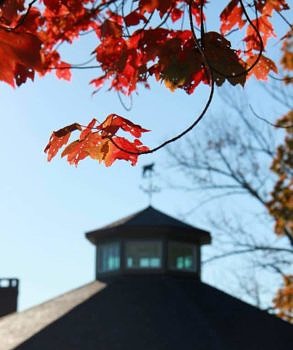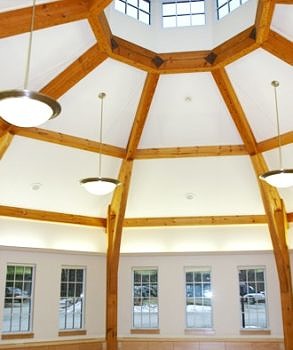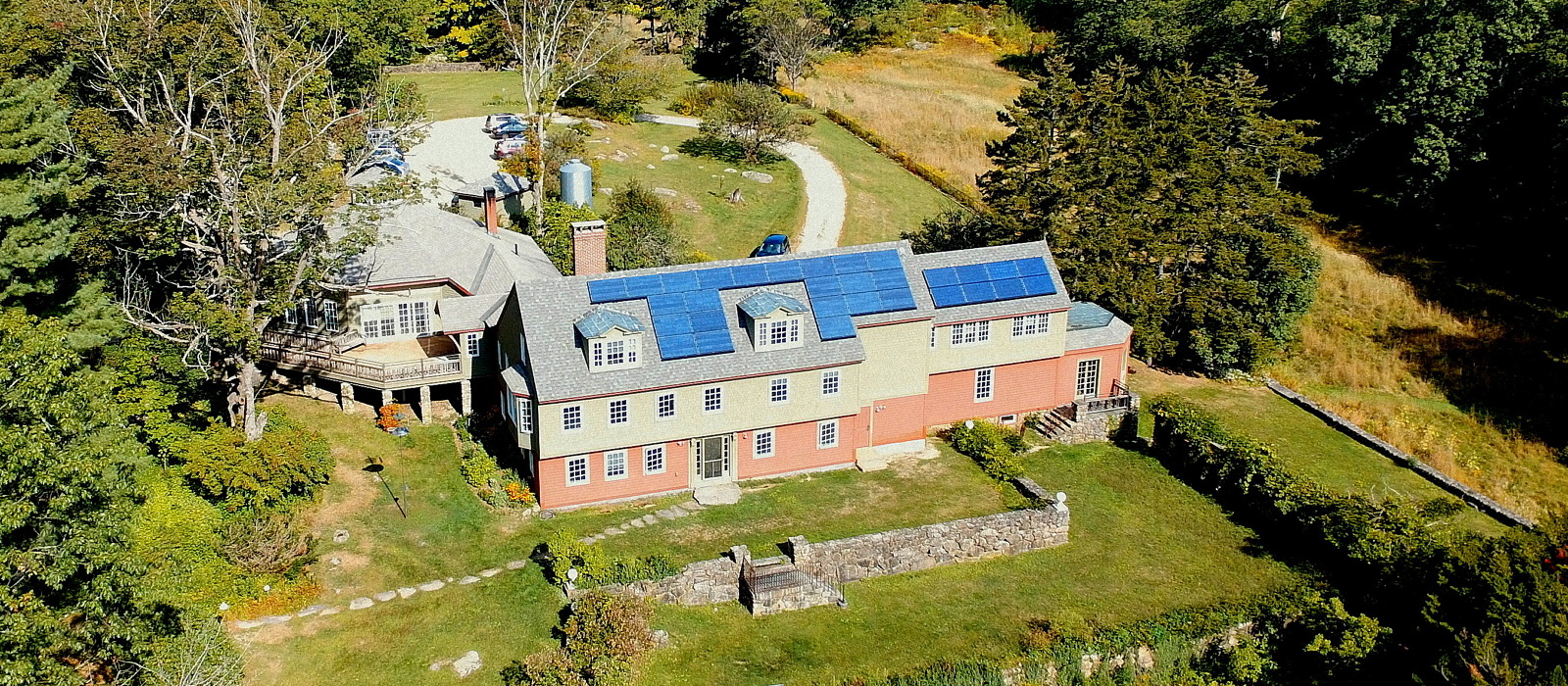A Commitment to Sustainability
The Harris Center was originally built in 1905 as a private home. Nearly a hundred years later, it was renovated to better serve its new use as an environmental education center. When we embarked on the renovation, we made a firm commitment to preserving as much of the original structure as possible and to utilizing sustainable building practices.
Composting toilets conserve water and electricity. A wood pellet boiler heats the building using pellets made from sawdust, and solar panels generate a portion of our electricity. The use of natural lighting and triple-glazed windows contribute to the building’s energy efficiency. Recycled, natural, or renewable materials were used wherever possible. Learn more about these features here, or visit the Harris Center in person to see our green building in action!
Skylights provide natural light. (photo © Laurel Brush-Swope)

Posts for the Thelma Babbitt Room — an octagonal, post-and-beam meeting space — were milled from white pine grown on Harris Center lands. The huge rafters and compression ring were recycled from a mill building in Massachusetts.

A 9th grader uses a thermal imaging camera to detect air leaks during an energy audit of the Harris Center building. (photo © Andria Johnson)

Contact Us
For more information on the Harris Center’s sustainable design features, contact Jeremy Wilson at (603) 525-3394 or by email.


